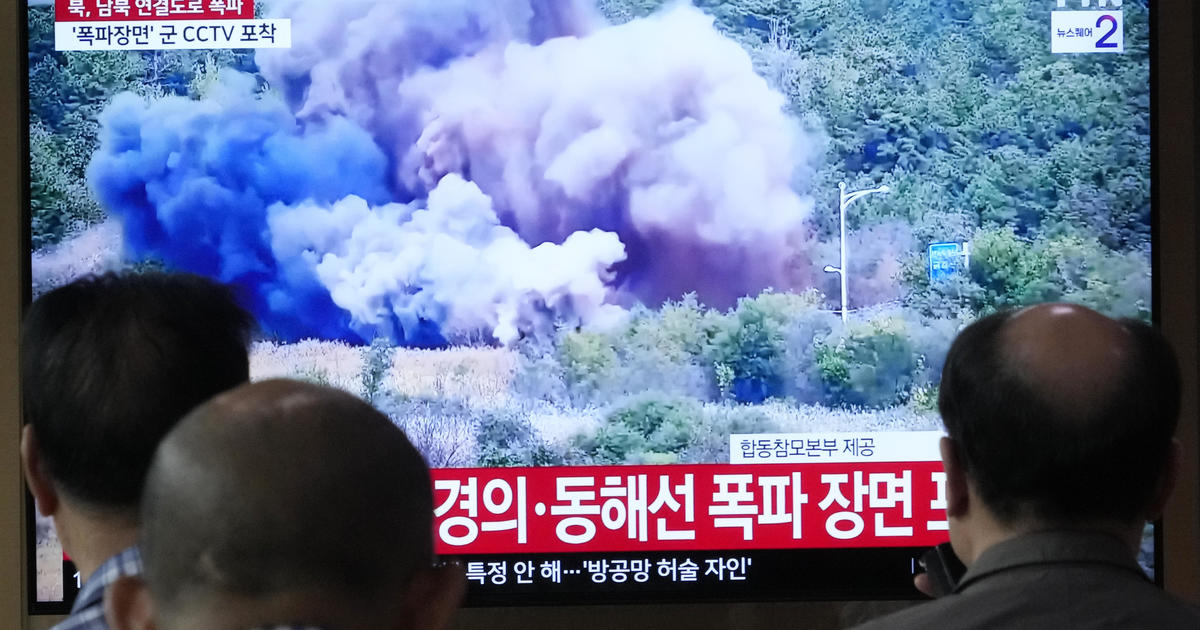The escalating tensions between North and South Korea reached a new high with North Korea’s symbolic destruction of inter-Korean roads. This act, following accusations of South Korean drone incursions over Pyongyang, represents a significant escalation in the already strained relationship between the two nations and signifies a hardening of North Korea’s stance against its southern neighbor. The demolition serves not just as a retaliation but also as a clear demonstration of North Korea’s intent to further isolate itself and solidify its aggressive posture. This action warrants close scrutiny, as it unveils a complex interplay of political posturing, military readiness, and historical precedent.
North Korea’s Actions: Demolishing Roads and Raising Tensions
The Destruction of Inter-Korean Roads
North Korea’s detonation of inter-Korean roads, previously used for communication and limited cross-border movement, is a stark visual representation of its escalating hostility towards South Korea. The act isn’t merely a symbolic gesture; it’s a concrete step aimed at severing physical links and reinforcing its isolationist policy. The explosions, witnessed by South Korean military surveillance, sent plumes of smoke into the air, showcasing the intensity of the action. This physical destruction underscores North Korea’s commitment to its newly declared policy of treating South Korea as its “principal enemy,” effectively ending any hope of immediate reconciliation or cooperation. The use of heavy machinery to clear debris from the exploded sections further underlines the decisive and irreversible nature of the action.
Beyond Symbolism: A Deeper Strategic Calculation
The destruction of the roads isn’t solely about emotional response; it’s a calculated move with potential strategic implications. By actively destroying infrastructure that once represented a symbol of potential cooperation, North Korea aims to physically reinforce its ideological and political separation from South Korea. This demolition could be preparatory work for creating additional, more substantial physical barriers along the border. The construction of such barriers could further hamper communication, deter any form of unofficial border crossing, and significantly impede any potential future reconciliation efforts. Furthermore, it solidifies North Korea’s narrative of self-reliance and opposition to external influence, strengthening domestic support for the regime amid external pressures.
The Context: Accusations of Drone Incursions and Retaliatory Threats
South Korean Drones Over Pyongyang?
The immediate trigger for North Korea’s actions is the alleged infiltration of South Korean drones into its airspace, including over the capital, Pyongyang. While South Korea hasn’t officially confirmed these incursions, North Korea insists it has irrefutable evidence of the events. The North Korean regime frames these actions as a grave provocation justifying the retaliatory measures, using the alleged drone incursions to fuel its anti-South Korean sentiment and consolidate public support. This portrayal serves to bolster the narrative of an external threat requiring strong, decisive action, consolidating internal support for the regime. This underscores North Korea’s extreme sensitivity to its sovereignty and any perceived violations thereof.
North Korea’s Military Posture and Threats of Retaliation
North Korea’s response has not been limited to road demolitions. Simultaneously, the North Korean military has placed its frontline artillery units and other troops on high alert, issuing warnings that further incursions would result in devastating attacks. The regime’s inflammatory rhetoric, including threats to reduce South Korea to “ashes,” further heightens the regional tensions. These threats, while extreme, serve to reinforce the gravity of the situation in North Korea’s eyes and potentially deter further incursions, even if such actions would invite potential consequences. The mobilization demonstrates a tangible military response to the alleged threat and serves as a warning to South Korea.
Historical Precedents and Future Implications
North Korea’s History of Demolitions
North Korea’s use of demolition as a tool for political messaging is well-documented. Previous instances include the destruction of the inter-Korean liaison office and facilities at the country’s nuclear test site. These actions underscore the pattern of North Korea using symbolic gestures, including demolition, to express anger and discontent with both South Korea and the international community. This pattern highlights the consistent deployment of aggressive symbolic action and potentially undermines diplomatic attempts at easing tensions. Each act served a different political purpose, illustrating the regime’s use of destruction as a tactic that shifts depending on political considerations.
The Implications for Regional Stability
The current escalation severely impacts regional stability and casts a long shadow on the possibilities for inter-Korean reconciliation. The intensified rhetoric, coupled with physical destruction, creates a volatile atmosphere that risks further miscalculation or unintended escalation. This dangerous situation necessitates careful diplomatic management from regional and international actors to prevent further deterioration. Any further military miscalculations could result in an escalating conflict. While a full-scale war remains unlikely given the disparity in military strength, the heightened tensions dramatically diminish regional stability.
Takeaways
- North Korea’s demolition of inter-Korean roads signifies a dramatic escalation of tensions with South Korea.
- The act is a calculated move designed to solidify North Korea’s isolationist policy and further its narrative of a threatened state.
- Allegations of South Korean drone incursions served as a pretext for North Korea’s retaliatory actions and heightened military posturing.
- The history of North Korea’s use of demolition as a political tool demonstrates a pattern of escalatory tactics used against both South Korea and the international community. The heightened military presence and extreme threats pose a significant risk to regional stability.




